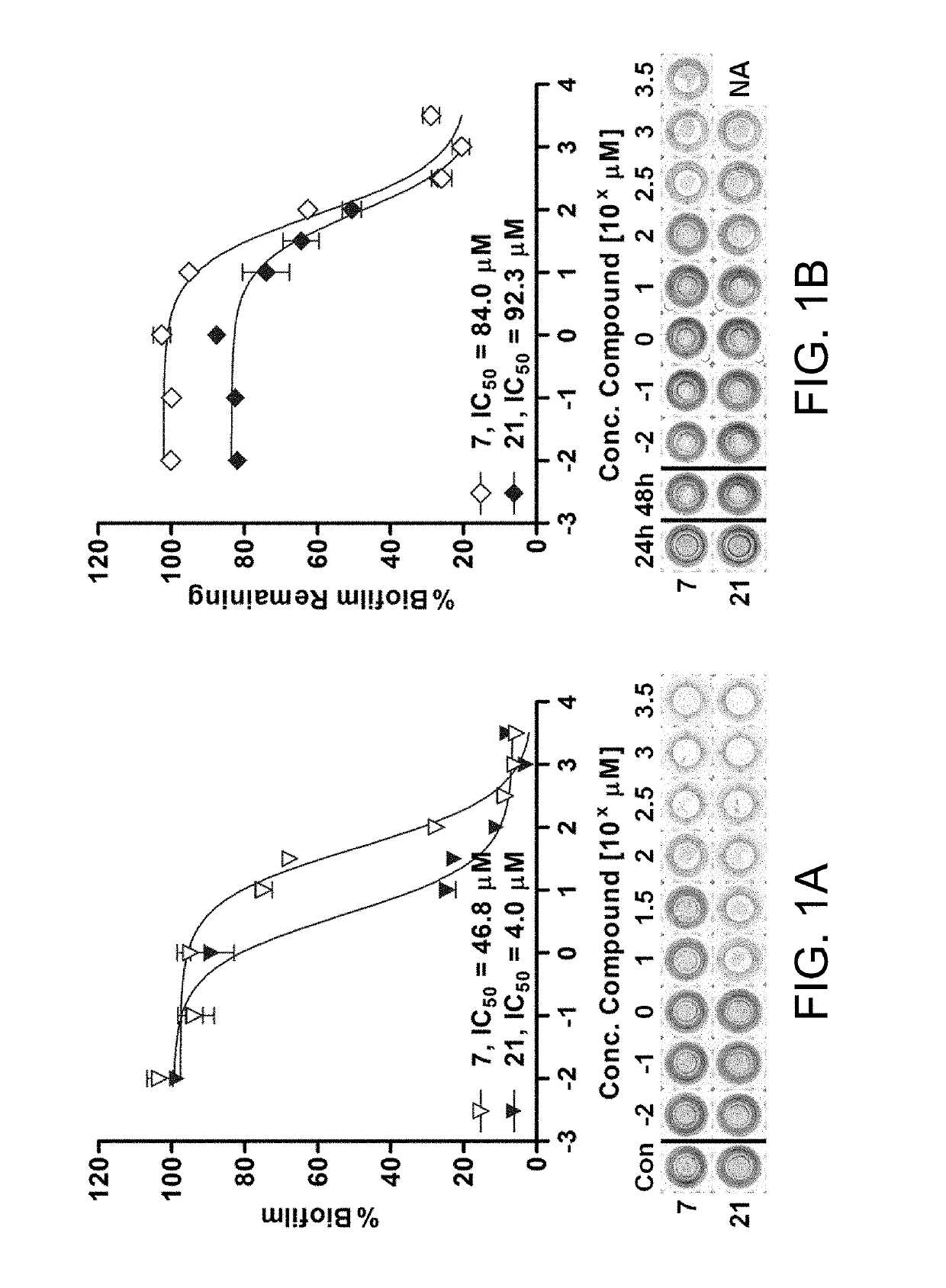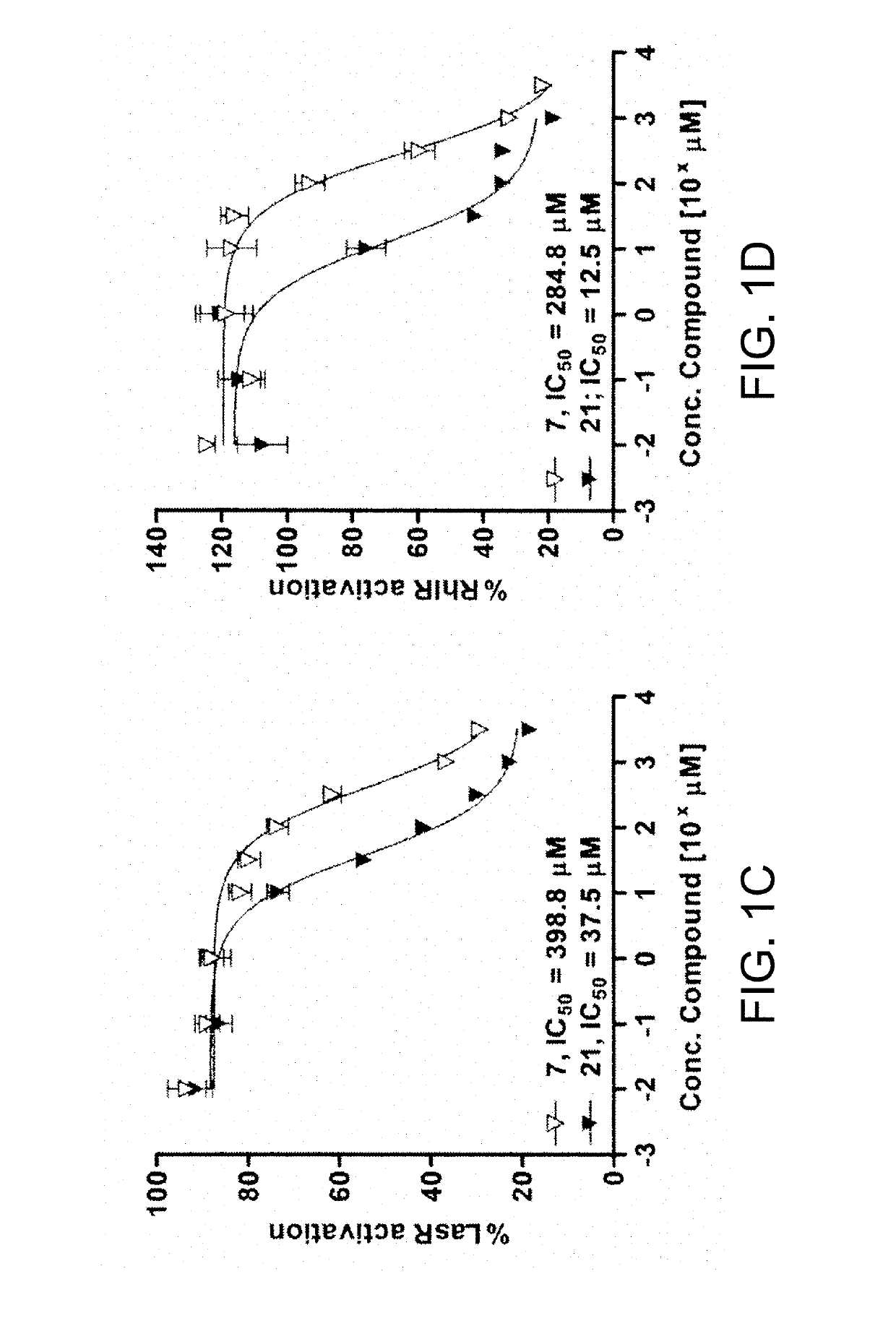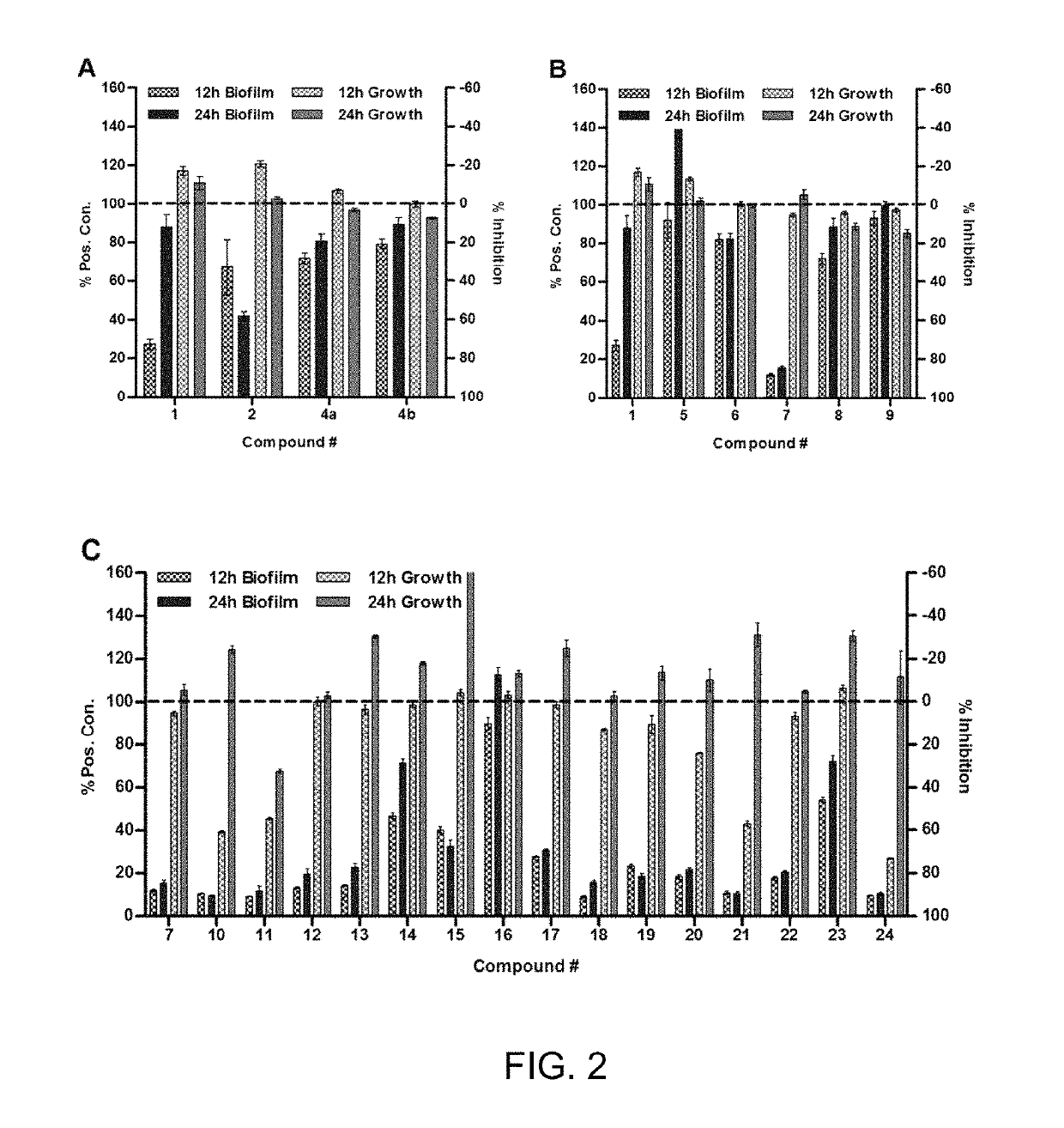Inhibition and dispersion of bacterial biofilms with 2-aminobenzimidazole derivatives
a technology of bacterial biofilms and derivatives, applied in the field of inhibition and dispersion of bacterial biofilms with 2aminobenzimidazole derivatives, can solve the problems of biofilms being particularly problematic, bacterial growth poses a significant obstacle to the successful treatment, and molecules exhibiting these properties remain rare, so as to reduce the virulence of bacterial infections and increase the susceptibility of quorum sensing bacteria
- Summary
- Abstract
- Description
- Claims
- Application Information
AI Technical Summary
Benefits of technology
Problems solved by technology
Method used
Image
Examples
example 1
Synthesis and Characterization Data
A. 2-Nitro-4-styrylaniline
[0179]
[0180]2-Nitro-4-styrylaniline was synthesized according to a modified version of a reported procedure. [35] In brief, 4-iodo-2-nitroaniline (500 mg, 1.89 mmol, 1.0 eq.) and palladium (II) acetate (Pd(OAc)2, 21.3 mg, 0.095 mmol, 0.05 eq.) were added to an oven-dried Pyrex tube equipped with a magnetic stir bar at room temperature (rt). The tube was purged three times via three sequential vacuum / N2 back-fill cycles. Next, freshly distilled styrene (260 μL, 2.27 mmol, 1.2 eq.), N,N-diisopropylethylamine (DIPEA, 825 μL, 4.74 mmol, 2.5 eq.), and acetonitrile (CH3CN, 5 mL) were added under an N2 atmosphere, and the reaction mixture was heated at 80° C. for 24 h. Upon cooling to rt, the solvent was removed in vacuo, and the resulting crude solid was adsorbed onto Florisil gel from a tetrahydrofuran (THF) solution. The resulting powder was dry-loaded on top of a silica gel column that was slurry-packed with ethyl acetate (Et...
example 2
l Assays
A. General.
[0256]Standard solvents, salts, and media were purchased from commercial sources and used as received. The HCl salt of synthetic compounds were used for biological evaluation if available; however, control experiments indicated that the HCl salt and the non-HCl versions had identical biological activities (data not shown). All biological assays were performed in untreated, flat-bottomed polystyrene 96-well microtiter plates (Costar 3370).
[0257]Absorbance and fluorescence measurements were obtained using a BioTek Synergy 2 plate reader running Gen 5 1.05 software. Spectroscopic measurements were made in 200 μL of media in 96-well microtiter plates (path length of ˜0.5 cm) unless otherwise noted. Bacterial growth was assessed by measuring the culture cell density according to absorbance at 600 nm (OD600). Biofilm was quantified by crystal violet (CV) staining according to absorbance at 590 nm (A590). All reported CV measurements represent the amount of surface-attac...
example 7
Protein Synthesis
A. Preparation of P. aeruginosa Strain PAO1 Gen-Gfp.
[0280]Compounds 7 and 21 were tested for their effect on general protein synthesis in P. aeruginosa. In these assays a P. aeruginosa strain that constitutively produced GFP was employed. Hentzer et al. pursued a similar strategy to ascertain whether a halogenated furanone targeted the las QS system in P. aeruginosa specifically or simply inhibited general protein synthesis. [59]
[0281]The constitutively-expressing genomic (gen)-GFP strain, PAO1 gen-gfp, was prepared using the mini-Tn7 transposon system reported by Lambertsen et al. and Koch et al. to introduce the Tn7 element miniTn7-gfp2 into the neutral chromosomal site attTn7 in the PAO1 genome. [41,42] The Tn7 element miniTn7-gfp2 was chosen for these studies because it encodes for the same GFP variant, GFPmut3b, used in our QS reporters, discussed herein below. However, rather than being an unstable GFP under the control of the laslI or rhII QS-dependent promot...
PUM
| Property | Measurement | Unit |
|---|---|---|
| pH | aaaaa | aaaaa |
| temperature | aaaaa | aaaaa |
| temperature | aaaaa | aaaaa |
Abstract
Description
Claims
Application Information
 Login to View More
Login to View More - R&D
- Intellectual Property
- Life Sciences
- Materials
- Tech Scout
- Unparalleled Data Quality
- Higher Quality Content
- 60% Fewer Hallucinations
Browse by: Latest US Patents, China's latest patents, Technical Efficacy Thesaurus, Application Domain, Technology Topic, Popular Technical Reports.
© 2025 PatSnap. All rights reserved.Legal|Privacy policy|Modern Slavery Act Transparency Statement|Sitemap|About US| Contact US: help@patsnap.com



